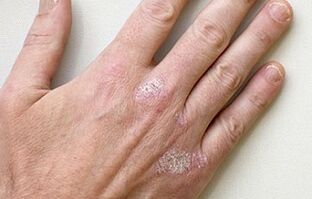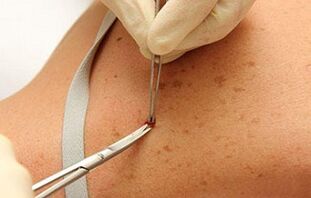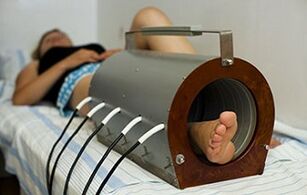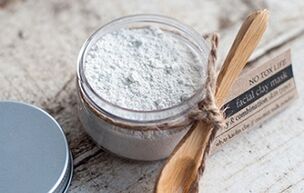Psoriasis is a chronic skin disease. It manifests itself in the form of a rash. The early stages are characterized by symptoms similar to the clinical picture of other epidermal pathologies. To prevent the development of the disease, to facilitate its course, it is necessary to distinguish pathology. To do this, you need to know the symptoms, manifestations of psoriasis at different levels.
Causes in adults and children
Why psoriasis occurs in children and adults, medical scientists do not yet know exactly. There is only speculation about the cause of the development of this disease. Thus, there is a presumption that psoriasis can be inherited: in people whose parents suffer from such skin diseases, psoriatic rash is often observed. Some doctors associate the development of pathology with immunological instability, metabolic disorders, and the presence of chronic infections. In most patients, the doctor noted severe hyperlipidemia.
To check for susceptibility to such diseases, it is necessary to perform classical genome analysis. Those with ten chromosome loci are more likely to have psoriasis. The main genome responsible for congenital predisposition is PSORS1.
Psoriasis can develop at any age: in children, young men and women, the elderly. In adults, according to medical scientists, the following factors provoke the disease:
- low immunity;
- chronic fatigue;
- alcohol abuse;
- severe stress;
- poor hygiene;
- overeating persists;
- insect bites;
- infectious pathology (influenza, ARVI);
- vaccination;
- temperature difference;
- vitamin deficiency;
- smoking tobacco;
- long-term medication;
- burns;
- allergies;
- hormonal imbalance;
- climate change;
- improper nutrition.
Children most often experience psoriatic eruptions:
- after a sore throat;
- if there is a chronic infection in the body;
- with low immunity.
Psoriasis cannot be started:people with this diagnosis increase the risk of early atherosclerotic vascular lesions and the occurrence of cardiac pathology. There is also the threat of arthritis.
Psoriasis often occurs in people with weak offspring.
How psoriasis manifests itself

Psoriasis is characterized by the appearance of large plaques on the skin. The spots are initially insignificant and appear on parts of the body where the skin is more rough (at the elbows, knees). Such a formation is lost. During scratching, wounds appear, which become pale in the morning.
This disease is characterized by the following manifestations:
- Stearin stain.This is a small scaly papule that merges into a plaque.
- Terminal movie.Under the psoriatic plaque there is a thin, bright pink skin. The doctor can see after removing all the scales.
- Precise bleeding(bloody dew syndrome). If the terminal film is damaged by scraping the stratum corneum of the epidermis, blood droplets will appear.
Such manifestations in aggregates are called psoriatic triads. They are detected during samples of inflamed skin areas.
Psoriasis also has the following symptoms:
- formation of new papules in case of damage to the skin and increased lesion area;
- rash elements have a dense structure;
- there is a red rim around the plaque;
- weakness;
- presence of pseudo-atrophic rim of three millimeters of whiteness around the rash;
- purulent odor from the skin (when pustules form);
- oily formation phenomenon, in which yellowish brown spots appear under the nail plate;
- proliferative acanthosis, in which the skin thickens, the interpapillary process elongates;
- bidal symptoms (nail psoriasis);
- scabies.
Since psoriasis is a chronic pathology, the symptoms begin to disappear after a few seconds, and the wound heals. But the papule is reshaped.
The first symptoms of the onset of the disease
The first stage of psoriasis is always a rash.
At first, it is almost invisible, without a feature scale. Some rash spots appear on the limbs.

After a few weeks, the number of affected areas increases. The rash merges into a large plaque, which is covered with silver scales. Itching in the early stages of psoriasis is mild. The person complains of chronic fatigue, weakness.
Such symptoms are also characteristic of allergic skin reactions, dermatitis and herpes zoster. Therefore, it is important to carry out a differential diagnosis.
During the examination, the doctor found a psoriatic triad. By the size of the rash, the doctor determines the etiology of psoriasis: drop-shaped, punctate or coin-shaped.
Signs of progressive disease stage
As the disease progresses, the number of papules increases, the rash spreads to healthy areas of the body. Slight scratches, bruises or burns will cause a nodular rash. The second level takes a long time. On palpation, you can find a dense border between the inflamed areas of the epidermis. The plaque has prominent edges in bright colors and is covered with scales.
In the last stages of the disease, the symptoms begin to disappear gradually. The plaque becomes lighter, the boundaries fade. After a while, the papule disappears, in its place remains dry skin, hyperpigmentation spots.
The temperature in psoriasis can only increase if there is an inflammatory process, acne increases. Then the affected area can injure.
What is the stearic stainic phenomenon
Stearin spots are the main symptoms that make up the psoriatic triad. This is a small area with the papular element of the rash, which is very fragmented. The more the doctor scratches the affected skin, the more exfoliation. During manipulation, the person does not experience pain. The phenomenon got its name because the loose skin scales look like stearin spots.
The first place to appear: localization of the rash
Initially, psoriatic eruptions form in the elbows, feet and knees. Then the papules spread to the body with thinner and smoother skin: on the lower legs, lower back, wrists, abdomen, groin area, scalp. The rash can be localized elsewhere. But this part of the body is most often affected by psoriasis.
If not treated properly, the disease spreads to the nails, mucous membranes, joints.
Localization of psoriatic rash in adults can be:
- Head. The rash is observed on the scalp, in the ears, on the back of the head, in the eyebrow area, eyelids, eyes, nasolabial folds.
- Lower limbs.
- Elbow. The form of scaly plaques that get rougher over time.
- Upper limbs. A small rash similar to urticaria occurs.
In children, the rash usually appears on:
- feet;
- ass;
- skin folds;
- elbow;
- scalp.
How scaly scalp on the head starts
Scaly lichen can spread throughout the body. Often acute. The rash is formed from beads to nuts. Papules are covered with silvery and white scales. The rash increases in size over time, merging into one focus with uneven edges. This plaque has clear boundaries. When the scalp is affected by psoriasis, a psoriatic crown shape is formed: red pustules with purulent contents appear behind the ears and along the forehead line.
How fast the pathology develops
How quickly psoriasis develops depends on its form. Thus, the type of drop-shaped pathology is distinguished by the ability to appear and disappear suddenly. Severe plaque psoriasis is characterized by the gradual spread of pustules throughout the body. The rash is then covered with a peeling crust in a short time. The rash merges, forming large plaques.
Diagnostic methods

If psoriasis is suspected, consult a dermatologist. The doctor makes an assumption diagnosis based on the patient's complaints and examinations. Doctors provide referrals for undergoing laboratory, instrumental research. Differential diagnostics is also carried out.
As the disease progresses, it is recommended to donate blood for analysis to identify acute, autoimmune or rheumatic processes. In severe situations, a biopsy is also performed, which shows Rete body accumulation, thickening of the lining, infiltration of the skin by poliblast, T lymphocytes, dendritic cells, increased angiogenesis under psoriatic plaques.
For differential diagnosis, do:
- allergy test;
- serum biochemistry test;
- stool analysis for dysbiosis;
- biopsy histological examination.
No special tests are required to diagnose psoriasis in children. Pathology is detected based on examination of rash elements.
How to treat psoriasis
Since psoriasis is considered a chronic condition, it cannot be completely cured. The goal of therapy is to achieve a stable remission and eliminate complications. To do this, use medicine, physiotherapy, folk methods. In severe cases, the patient is hospitalized. In the early stages, therapy is allowed to be carried out at home.
Clinical therapy
To treat psoriatic lesions, doctors prescribe antihistamines to relieve swelling, itching, and redness.

Enzymatic agents are also used. They stimulate the body to produce the necessary enzymes. Damage to the skin of the body causes discomfort, congestion.
The realization that an incurable disease causes psychological problems. Therefore, doctors prescribe sedatives to help restore emotional state.
Hepatoprotectors are used to improve liver function. Inflammation and itching can be treated with nonsteroidal anti-inflammatory drugs. To strengthen the body, immunomodulators are prescribed.
Physiotherapy techniques are also used. They help remove pigmentation and speed up healing. Doctors recommend:
- selected herbal remedies;
- laser action on the skin;
- ultrasound treatment;
- magnetotherapy.
In the hospital, the patient is under constant medical supervision. Therefore, it is easy to track the effectiveness of a prescribed treatment regimen, to make precise adjustments to the therapy used.
Home Treatment
After discharge from the hospital, treatment continues. To maintain normal health, to achieve a stable remission, the doctor prescribes a number of medications in one course. Complex of vitamins, ointments, folk remedies are used.
Patients are recommended to treat psoriasis-affected skin areas daily with hormonal and non-hormonal ointments.
To improve the condition of the epidermis, dermatologists prescribe vitamins. Vitamins A, E, D and C are very useful in the fight against psoriasis. They strengthen the body's defenses, help restore and cleanse the skin.

Traditional healers recommend the use of activated charcoal. One of the main causes of the development of psoriasis is metabolic disorders, intoxication. Activated carbon acts as an absorbent, therefore it cleanses the body of harmful substances. It must be taken for a month, twice a day, at a dose of 1 tablet per kilogram of body weight.
White clay helps restore skin. It relieves inflammation, dries, relieves itching. Bathing with the addition of sea salt is also useful.
When treating psoriasis at home, it is recommended to follow a few rules:
- Take the medicine prescribed by your doctor according to the prescribed dose.
- Treat your skin with ointments and creams.
- Remove the crust carefully after softening.
- Air and sun bath.
- Avoid stressful situations.
- Observe your daily routine, diet.
- Get enough rest.
- Rest while taking medicine.
By following these recommendations, one can prevent the disease from recurring.
Therefore, psoriasis is a serious chronic disease. The reasons for its development have not been accurately explained, only provoking factors are known. The disease has special symptoms, but in the first stage it is similar to other skin pathologies. To identify and start treating the disease in a timely manner, you need to contact a dermatologist when a suspicious rash appears.























